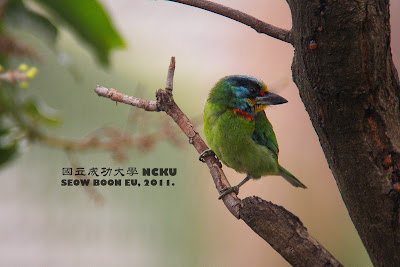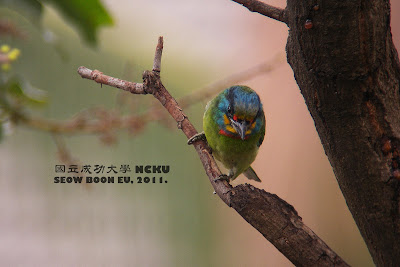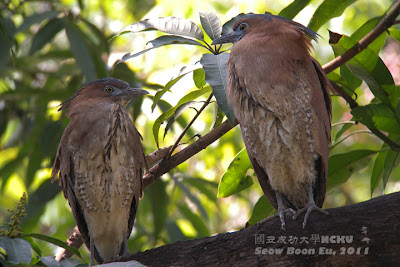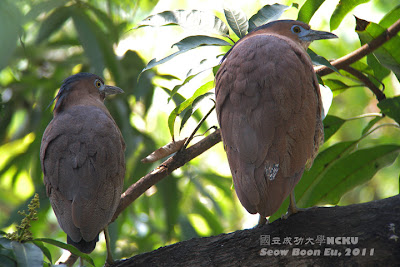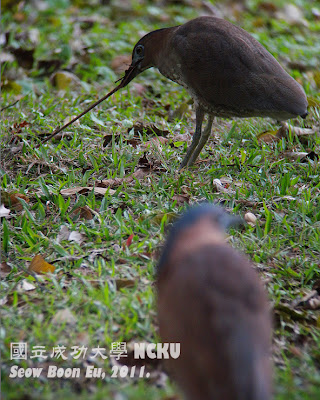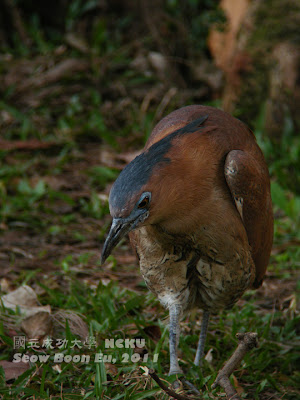Today, I was so excited to see a pair of Malayan Night Heron at NCKU
(National Cheng Kung University) in
Tainan, Taiwan. It was my first experience of seeing a pair of Malayan Night Heron feeding on the same ground and territory.
But, I have a problem to distinguish the male and the female, I can't even find a good and detailed reference about the differences. However, I noticed one of the birds has very bright blue lores (the space between the eye and bill) and striking plumage as compared to the another one. I strongly believe that the one with the brighter color on the lores and striking plumage is the male, while the other one with the pale lores and plumage must be the female.
or could it be an adult with the striking lores and the immature with pale lores? I believe these birds are territorial birds, then why both can feed on the same ground if they are not a breeding pair?
Click
HERE to view the Part-2 of this blog.
and click
HERE to listen to their call which was recorded at night at NCKU.
View my other blogs about the Malayan Night Heron:
Malayan Night Herons in northern part of Taiwan
Juvenile Malayan Night Heron spotted in Singapore Botanic Gardens
Boon Eu, 7-March-2011, Tainan, Taiwan.
